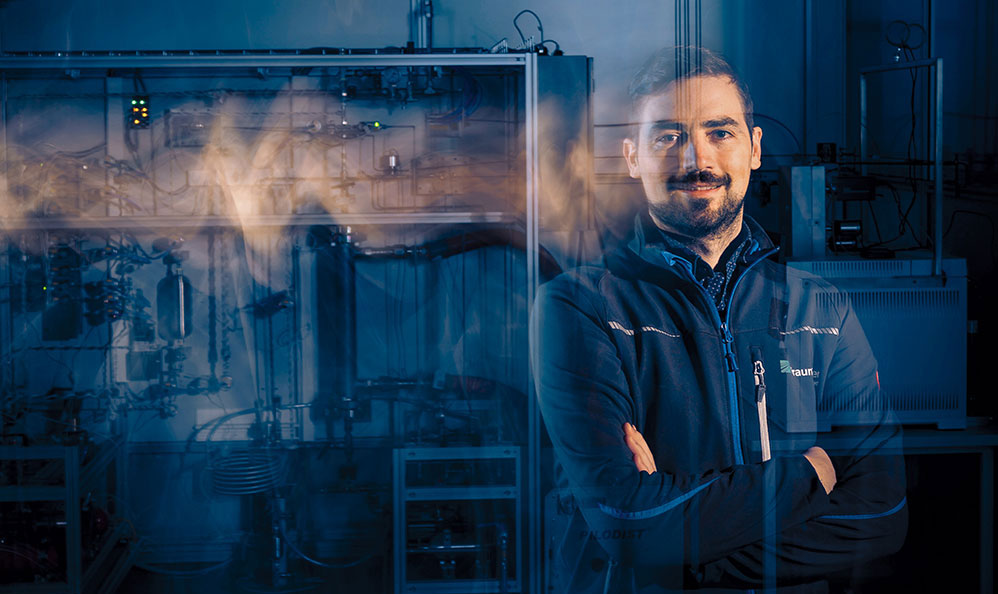Drivers have bewailed the record highs in gas and diesel prices over the past year. However, the EU project To-Syn-Fuel could pave the way forward here, as researchers from the Fraunhofer Institute for Environmental, Safety and Energy Technology UMSICHT are developing a new method of producing fuel, which they have already implemented at a pilot scale. “We manufacture fuels from waste biomass such as sewage sludge, which results in sustainable fuels without any conflict with food production or use of plants that should serve as foodstuffs or animal fodder. This fuel delivers a carbon footprint reduction of over 85 percent per kilometer driven when compared to fossil fuels,” says Dr. Robert Daschner, head of department at Fraunhofer UMSICHT.
The development is based on the well-established pyrolysis process, whereby biomass is heated to temperatures of up 600 degrees Celsius in the absence of oxygen until it is converted into oil. Dr. Daschner goes on to explain what makes the TCR® process developed by Fraunhofer UMSICHT so special: “We significantly improved the quality of the resulting oil, to the point that it’s comparable with crude oil. This oil can then be processed via conventional refinery methods to convert it into fuels that meet the most important standard requirements for gas and diesel — meaning that they can be used without any need for engine alterations or impact on performance.” The researchers achieved this quality hike by adding a second step to the procedure, so that the usual pyrolysis process is followed by a thermocatalytic reforming step. The team uses the carbon material produced in the pyrolysis as a catalyst in order to purify the synthesis steam even more and extract high-quality oil from it.
The process is already running at a demonstration plant that has so far extracted more than 50,000 liters of biogenic crude oil from 500 tons of sewage sludge. In other words, the facility can convert 10 tons of biomass into 1 ton of crude oil every day. The demonstrator plant was also used to refine some of the crude oil to produce fuel, which then powered a test vehicle through a 2,000 kilometer round trip across Europe. A German refineryis already planning to utilize sewage sludge on a large scale, with a bigger plant set to commence operations in 2023 and commercial operations set to start between 2024 and 2025. The mobility transition is in full swing.
To-Syn-Fuel: FraunhofeConversion of sewage sludge into fuel and hydrogen
